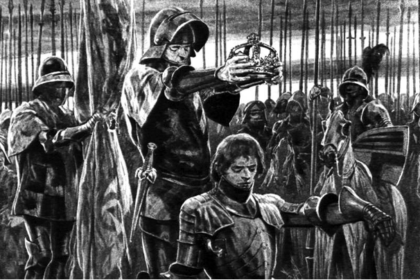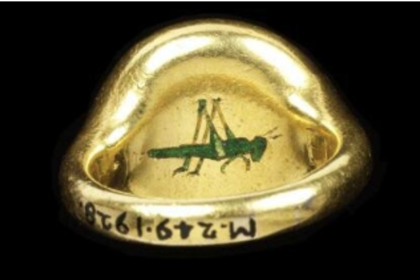This beautiful medallion has traditionally been said to commemorate the marriage of Henry VII and Elizabeth of York. Henry and Elizabeth were married on the 18th January, 1486, in Westminster Abbey. Although the Lancastrian Henry gained the throne by right of conquest—in reality, a much stronger argument than his distant blood claim—his marriage to the heiress of the House of York helped to unify the country and bring peace after decades of conflict. This was a significant moment in English history, one well worth such beautiful commemoration.
But is that what it shows? The medal was created in Prague at the end of the 16th century, one in a series of similar medallions, including one of Empress Leonora of Portugal. This, in and of itself, does not mean that it cannot be Henry and Elizabeth. Such medals of historical figures were popular in the Renaissance, and the union that founded the House of Tudor would be a very suitable theme. However, there is little to prove that it actually is Henry and Elizabeth.
The identification rests on the garland of roses on the reverse face of the coin, which have traditionally been said to be Tudor roses. However, whilst they are certainly double roses, without colour, it is impossible to say that they are Tudor roses. Whilst they were the only ones to use the ‘gules and argent’ colouring, the Tudors were not the only ones to use the double rose. The use of double roses on this coin, by itself, cannot provide a positive identification.
On first glance, it is tempting to see the rays of the sun as suggestive; afterall, the most commonly used symbol of Edward IV, Elizabeth’s father, was a sun, which was also adopted by Henry to emphasise the continuity of his reign. However, the sun used by Edward IV, and latterly Henry VII, was the sun in splendour, a very different representation. In fact, these rays seem to be suggestive of a heavenly blessing of the marriage, rather than a particular heraldic symbol.
So what do we know about this couple? The three inscriptions offer no clues, sadly.
IUNGIMUS OPTATAS SUB AMICO FOEDERE DEXTRAS
(We join our hands under the covenant of unity)
UXOR CASTA EST ROSA SUAUIS
(The chaste wife is a sweet rose)
SICUT SOL ORIENS DEI: MULIER BONA DOMUS EIUS ORNAMENTUM.
(As the rising sun is the ornament of the day, so is a good wife the ornament of her house)
In reality, these are rather banal, commonly used statements, often trotted out when discussing marriage and alliances. One interesting point, though, is that two of the three statements focus on the woman, with little reference to the man. Which brings me to another interesting observation regarding the two figures. The woman is wearing a very ornate, regal crown, whilst the man is crowned with merely a floral wreath. This, combined with the focus on the woman in the inscriptions, suggests that this was a marriage where the woman was of higher status than her new husband, that she was of royal birth, perhaps even a queen regnant, and he, whilst no doubt a nobleman, was not.
There are really no other clues to suggest who this couple could be. Their clothing suggests pre-16th century, but the style is very vague. From the hairstyles, my guess would be late medieval. And although the medallion was made in Prague, they could be from any European country. There is really very little information to work with
Still, even if we do not know who this couple is, the medallion is a fine example of 16th century “goldesmytheswercke,” and demonstrates the value that the Renaissance placed on history.





